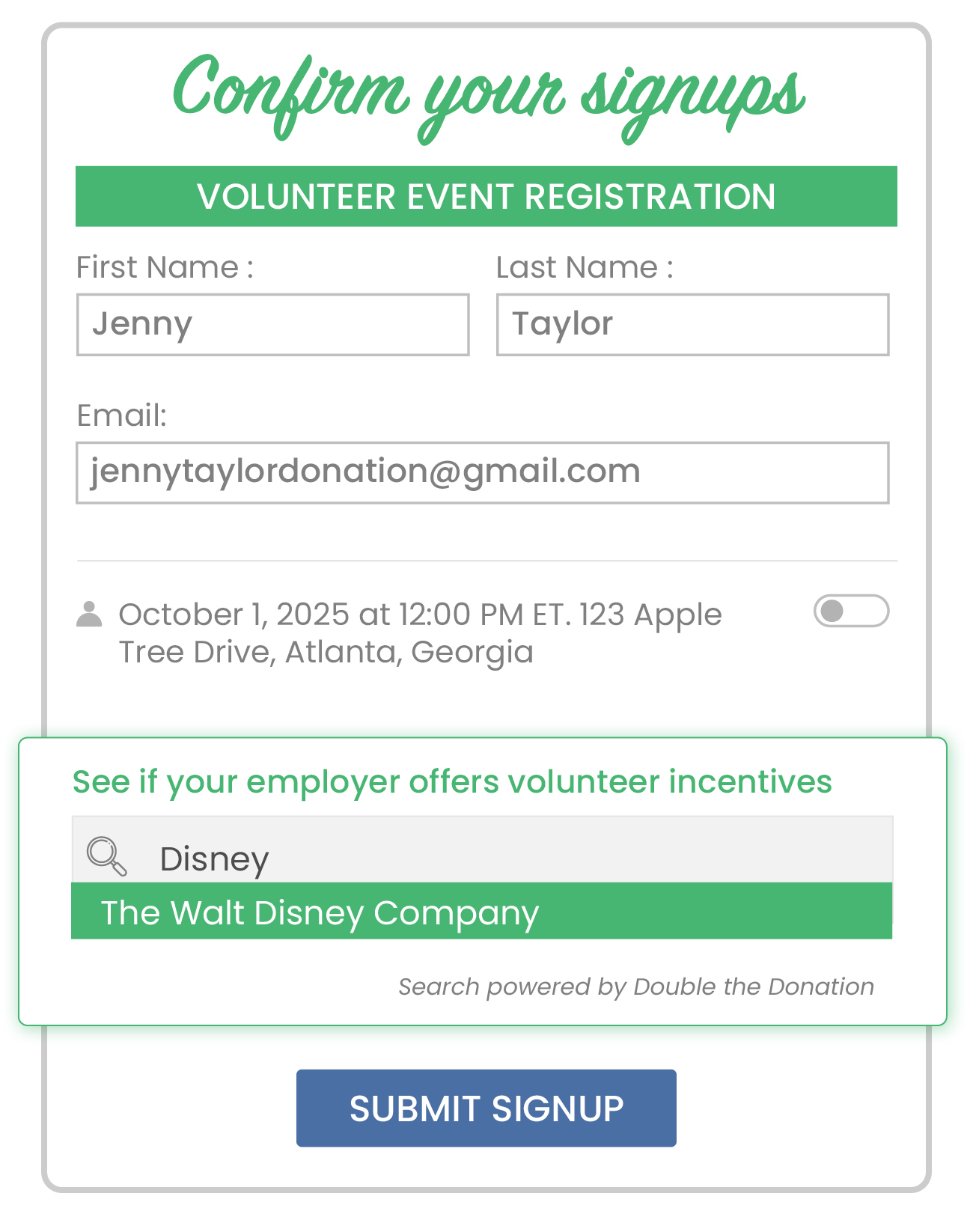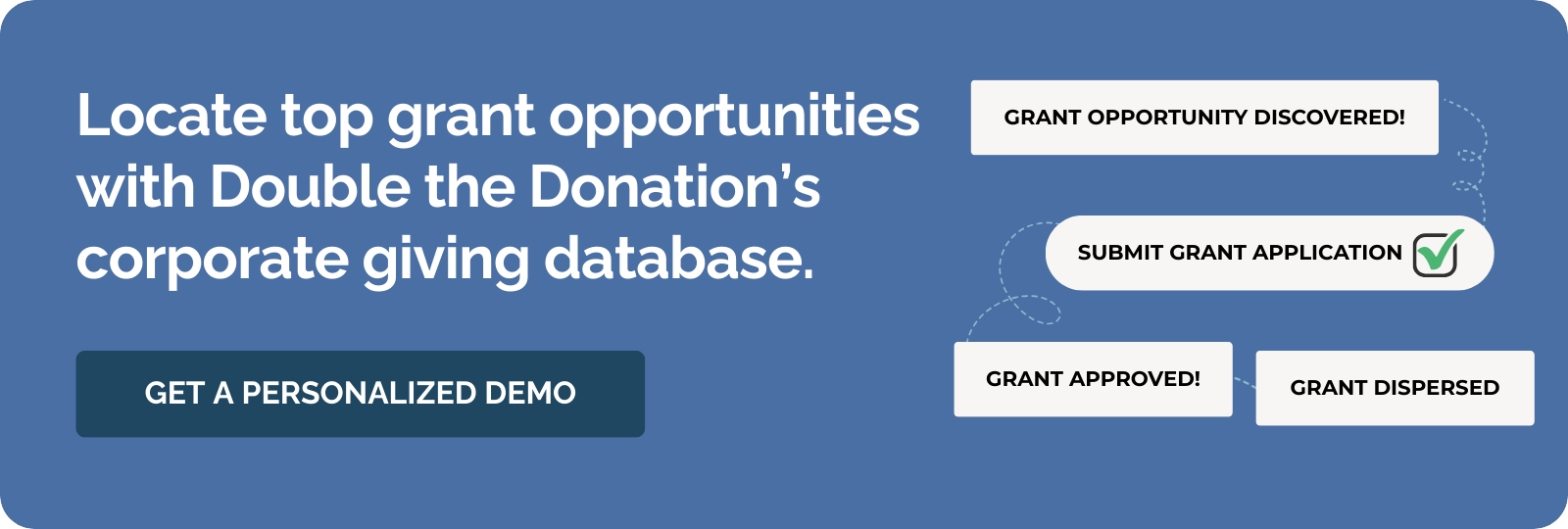How to Search for Grants Like a Fundraising Pro
When it comes to securing funding for your nonprofit, knowing how to search for grants effectively can make all the difference. But let’s face it: digging through databases, deciphering eligibility requirements, and crafting tailored proposals can feel overwhelming, especially if you’re juggling multiple roles. That’s where a strategic approach is essential.
In this post, we’ll walk you through how to locate grants like a fundraising pro—covering the tools, tactics, and mindset that help seasoned grant seekers uncover the right opportunities for their causes.
Specifically, we’ll examine the following best practices:
- Assess your organization’s needs.
- Use the right tools and resources.
- Do your research.
- Use your connections.
- Implement a grant prospecting tracker.
- Focus on relationships, not just applications.
- Keep it consistent and ongoing.
- Learn from declined (or accepted) proposals.
Whether you’re brand new to grant research or are simply looking to sharpen your existing skills, these insights will help you streamline your search and boost your chances of success. Let’s get started!
1) Assess your organization’s needs.
Before you even begin typing keywords into a grant database, take a step back and get clear on what your organization actually needs. Professional fundraisers don’t waste time chasing every available grant. Instead, they target funders whose priorities align closely with their own programs.
As you kick off your grant search, start by defining your nonprofit’s basics:
- What project or program needs funding? Is it a new initiative, a program expansion, or general operating support?
- How much funding do you need? Having a ballpark budget helps narrow down grant opportunities by typical award size.
- What is your timeline? Some grants are for immediate needs, while others take months to secure. Make sure deadlines fit your schedule.
- What type of funder are you seeking? Corporations, private foundations, and government agencies all have different goals and requirements.
You’ll want to think, too, about your organization’s capacity. Some grants require complex reporting, matching funds, or long-term outcomes. Meanwhile, others are smaller and more flexible. Knowing what you’re equipped to manage ensures you don’t overcommit or underdeliver.
2) Use the right tools and resources.
Searching for grants without the right tools is like trying to find a needle in a haystack. Fundraising pros know that using reliable, up-to-date resources is key to uncovering high-quality opportunities efficiently. The right tools help you filter out irrelevant results and focus on grants that are actually a good fit for your mission.
Here are some go-to tools and platforms used by experienced grant seekers:
- Candid’s Foundation Directory Online: One of the most comprehensive databases of U.S. foundation funders. It includes detailed profiles, past grantees, and application information.
- Grants.gov: The official source for federal grants. If your organization is eligible for government funding, this is a must-use resource.
- GrantStation: A user-friendly platform offering access to private, corporate, and government funding opportunities, especially helpful for small nonprofits.
- Instrumentl: Known for its smart matching features and time-saving tracking tools, Instrumentl combines research, prospecting, and management in one platform.
- Double the Donation: Not only does Double the Donation’s database contain grant information, but it also includes details on matching gifts, volunteer grants, in-kind donations, VTO programs, and more. That makes it a one-stop-shop to increase all forms of corporate giving!
As you search, don’t be afraid to mix and match based on your needs and budget. And remember—your tools are only as good as the strategy behind them. Stay focused on your mission, and use these resources to build a targeted, time-efficient grant search.
3) Do your research.
Once you’ve found a potential grant opportunity, don’t just rush to apply. Instead, take the time to dig deeper. One of the biggest mistakes new grant seekers make is applying for funding without fully understanding the funder’s priorities, requirements, and funding history. Fundraising pros, on the other hand, know that thorough research is what separates a generic application from a compelling, tailored proposal.
Here’s what you should look for in your search:
Funder’s Mission and Priorities
Every grantmaker has specific causes or issue areas they care about. Read their mission statement, giving guidelines, and funding priorities to see if your organization aligns with their focus. If your program only loosely connects to their goals, it may not be worth your time.
Past Grantees
Take a close look at who the funder has supported in the past. What types of organizations receive grants? Are they similar in size, mission, or geographic focus to yours? This information—often available on the funder’s website or in their IRS Form 990—can offer valuable clues about whether your nonprofit aligns with their priorities. Understanding their giving history helps you gauge your chances of success and tailor your approach accordingly.
Grant Amounts and Restrictions
Note the typical grant size and whether there are restrictions on how the funds can be used (e.g., only for project support, not general operations). Researching grant amounts and restrictions helps you avoid applying for funding that doesn’t match your needs or eligibility. If a funder typically gives $5,000 grants and you’re asking for $50,000, for example, your proposal is likely to be dismissed.
Application Process and Deadlines
Some funders have formal application processes with strict deadlines, while others accept proposals by invitation only. As you go through the process, pay attention to any required documentation, word counts, and reporting expectations so you can prepare accordingly.
By doing your research, you not only save time by avoiding poor-fit opportunities, but you also put yourself in a better position to write a winning application. Remember: funders want to invest in organizations that understand their mission and demonstrate a clear, thoughtful alignment. That can be you—so long as you take the time to conduct thorough research beforehand.
4) Use your connections.
Smart grant seekers know that one of the most underused assets in fundraising is your existing network. After all, fundraising pros don’t just rely on cold applications. They tap into personal and professional relationships to strengthen their chances of securing funding.
One powerful, often overlooked strategy is leveraging your current donors’ employment information to find connections to corporate grantmakers. Many companies have corporate philanthropy programs that include community grants, sponsorships, and employee-directed giving. If your donors work for companies with such programs, you may already have a foot in the door.
Not to mention, corporate grantmakers often give preferential consideration to organizations that their employees support. By identifying donors who work at these companies, you can:

- Ask if they’re aware of their employer’s grant or giving programs
- Request an introduction or nomination (when appropriate)
- Strengthen your application by showing existing employee support
In order to locate this information, we recommend:
- Including an optional employer field in your donation forms or volunteer registration pages
- Using tools like Double the Donation to match donors with their employers’ giving programs
- Simply asking—many supporters are happy to help if they know it could lead to more funding for your cause
Don’t underestimate the value of a warm connection. A personal referral or employee endorsement can go a long way in making your grant application stand out.
When you combine solid research with meaningful relationships, you’re not just searching for grants—you’re building pathways to long-term support.
5) Implement a grant prospecting tracker.
Searching for grants isn’t a one-time task—it’s an ongoing process that involves tracking multiple opportunities, deadlines, requirements, and follow-ups. That’s why fundraising pros rely on a grant prospecting tracker to stay organized and keep their strategy focused.
A grant prospecting tracker is simply a tool—usually a spreadsheet or database—that helps you monitor your potential funders and manage the entire grant search process from start to finish.
Without a tracking system, it’s easy to lose track of:
- Which grants you’ve already reviewed or ruled out
- Upcoming deadlines and submission windows
- Key funder details like contact info, priorities, and application requirements
- The status of each grant (e.g., researched, applied, awarded, declined)
Keeping all this information in one place saves time, reduces errors, and helps you prioritize your efforts effectively.
At a minimum, your grant prospecting tracker should include:
- Funder name
- Type of grant (foundation, corporate, government, etc.)
- Focus area or alignment with your mission
- Typical grant amount
- Application deadline
- Status (e.g., researching, submitted, pending, declined)
- Next steps or follow-up tasks
- Notes (e.g., eligibility notes, past communications, internal reminders)
You can use Excel, Google Sheets, or even dedicated grant management software, depending on your team size and budget.
Pro Tip: Make it a habit to review and update your tracker weekly, especially during active grant seasons. This not only keeps you on track but also gives you a high-level view of your grant pipeline, helping you make better decisions about where to invest your time and energy.
6) Focus on relationships, not just applications.
One of the biggest differences between novice and professional grant seekers? Pros know that grants aren’t just transactions—they’re relationships. While it’s tempting to focus all your energy on crafting the perfect proposal, building genuine connections with funders can have a far greater long-term impact.
After all, behind every grant opportunity is a person or team who wants to invest in causes that align with their mission. Funders are more likely to support organizations they know, trust, and understand. When you take time to build a relationship, you gain insights into their priorities, increase your credibility, and perhaps even unlock opportunities that aren’t publicly listed.
If you’re looking for ways to build relationships with grant funders, we recommend:
- Reaching out before applying: If allowed, send a brief, respectful inquiry to introduce your organization and ask if your project is a good fit.
- Following up after decisions: Whether you’re awarded or declined, thank the funder and ask for feedback. It shows professionalism and can open the door to future opportunities.
- Keep funders updated: Stay in touch with past or potential funders by sending periodic updates about your work, impact, or success stories—even when you’re not applying.
Focusing on relationships helps transform grant-seeking from a reactive scramble into a strategic partnership-building process. The goal isn’t just to win one grant—it’s to become a trusted partner funders want to support year after year.
7) Keep it consistent and ongoing.
One of the biggest myths about grant seeking is that it’s something you do once or twice a year. In reality, successful fundraising pros treat grant prospecting as a year-round, near-constant effort rather than a one-time scramble to meet a deadline.
After all, grants are highly competitive, and timing often plays a big role. Opportunities open and close on rolling deadlines, new programs are announced throughout the year, and funders often want to see a history of engagement before awarding support. That’s why consistency is key.
Instead of only searching for grants when funds run low, build prospecting into your weekly or monthly workflow. Set aside dedicated time to:
- Review and update your grant tracker
- Research new opportunities
- Follow up with funders or submit applications
- Stay on top of upcoming deadlines
- Monitor funder newsletters and announcements
Consistent effort means better-prepared applications and a stronger, more diverse funding pipeline. It also helps you build momentum over time. Each application submitted, funder contacted, or relationship developed strengthens your organization’s overall grant readiness.
Even if you don’t land every grant, consistent prospecting ensures you’re always learning, refining your strategy, and staying connected to potential funders. Some grants may take a year or more to cultivate—starting early and staying engaged gives you an edge.
Bottom line: Treat grant prospecting like any other key part of your fundraising strategy. The more regularly you do it, the better your results will be over time.
8) Learn from declined (or accepted) proposals.
Even the most seasoned fundraising pros sometimes get declined. What sets them apart is that they treat every outcome—win or loss—as a learning opportunity. After all, whether a grant application is accepted, rejected, or placed on hold, there’s always valuable insight to gain.
Here’s what you should know…
When You’re Declined
Don’t take it personally—grants are competitive, and many excellent proposals don’t get funded simply due to limited resources. Instead:
- Ask for feedback: Many funders are willing to share why a proposal wasn’t selected. Their input can help you improve future submissions or better align with their priorities next time.
- Review your proposal internally: Look at your narrative, budget, and how well your project aligns with the funder’s mission. Were there gaps in clarity, data, or fit?
- Keep the door open: A “no” today doesn’t mean “no” forever. Thank the funder, stay in touch, and let them know you’re interested in future opportunities.
When You’re Accepted
A successful proposal is more than a win—it’s a blueprint for ongoing efforts. Use it to:
- Identify what worked: Was it your storytelling, outcomes, community impact, or funder alignment? Document these strengths for future use.
- Strengthen future applications: Reuse successful language or structure (tailored to each funder, of course) and share your wins internally to build your team’s confidence.
- Build a long-term relationship: Don’t treat it as a one-time transaction. Keep funders updated on your progress, meet reporting deadlines, and express gratitude regularly.
In short, every proposal is part of your learning curve. Fundraising pros embrace both successes and rejections as essential steps toward becoming more effective, strategic, and resilient grant seekers.
Wrapping up & additional grant-seeking resources
Mastering the art of grant searching doesn’t require years of experience. You just need the right mindset, tools, and strategy.
By thinking like a fundraising pro, you can cut through the noise, find funders that align with your mission, and position your organization for long-term success.
Remember: smart grant seekers don’t just search more—they search better. Use what you’ve learned here to focus your efforts, build a strong pipeline of funding opportunities, and approach every search with confidence and purpose.
Ready to learn more about nonprofit grants and how you can make the most of them? Check out these additional resources:
- What Are Corporate Grants for Nonprofits? Guide + Examples. Corporations are some of the most generous grant-making entities. Explore this complete guide to learn how you can get started!
- Companies That Give Grants: 20 Leading Businesses. Kick off your grant-seeking efforts with this list of top businesses known for their grant opportunities.
- 35 In-Kind Giving & Grant Statistics Nonprofits Should Know. Get inspired by the facts and figures behind in-kind giving and grants for nonprofits. These statistics illustrate the real fundraising potential!




